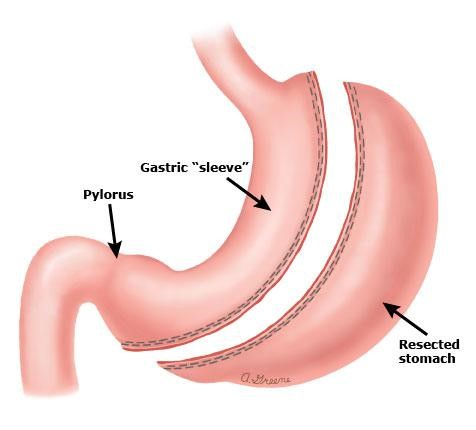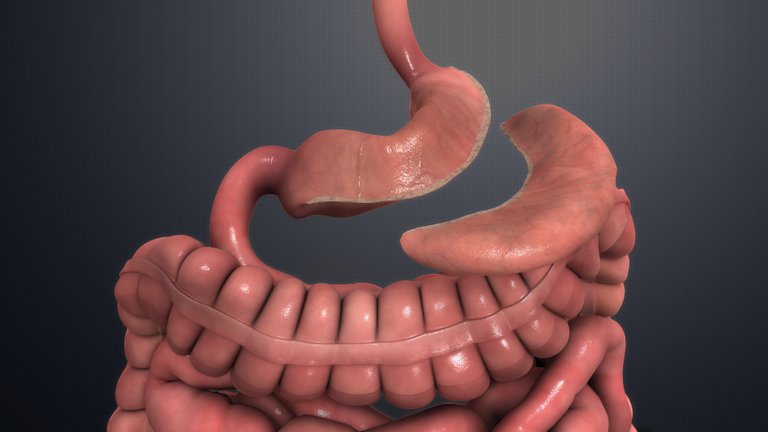Bariatric Surgery - Sleeve Gastrectomy in Weight Loss
I saw Lola about 1 year ago, and she was very fleshy. I wouldn't refer to her as obese but she had some weight on and was always complaining. She would always complain about her weight and how she would love to look. Some days ago, she said she was coming to visit me, and I couldn't identify her. She had undergone Bariatric Surgery and had lost weight. She said, although she had the surgery, she still had to do a lot fo exercise, change in lifestyle, and she said while the surgery was good, she also did well to change her lifestyle. This surgery can be done in three forms which are the Roux-en-Y gastric bypass, adjustable gastric banding and sleeve gastrectomy but for the sake of this post, I will be looking at Sleeve Gastrectomy which is the cutting of the stomach to a smaller size.
The stomach collects food from the esophagus where the food gets to the first layer of the stomach which is the cardia which is in right proximity to the heart. The food then goes to the fundus, then to the body which is very expandable compared to other part of the stomach. The food then is pushed to the antrum where digestive materials first interact with the stomach, then to the pyloris where there is the pyloric sphincter that prevents the release of inproperly digested food to the small intestine, the Duodenum is the fist part of the small intestine, next to the stomach. The pancreas with send pancreatic juice to the duodenum which would aid digestion. We are discussing about the stomach so let's quickly say that the stomach is made up of the lesser curvature which is connected to the liver, and the duodenum and the greater curvature which is the bigger side that has the greater omentum which is a fatty apron.

https://commons.wikimedia.org
For a sleeve gastrectomy, there needs to be a prove of not being able to lose weight after lots of exercise and dietary change by the person. If the person doesn't have a BMI of less than 40 or 35 with type two diabetes. The procedure is done using 5 laproscopic inscisions so as to identify the place where the surgery is taking place, with one of the incisions responsible for the insertion of the veress needle to deliver carbon dioxide gas to the cavity of the abdomen to create pneumoperitoneum which is the use of gas to separate tissues purposefully. Another insertion is the retracter which is inserted to help lift the liver upwards so as to enable seeing the stomach, another insertion is to remover the part of the stomach that has been removed. The other two insertions are to insert the instrument for surgery. A nasal gastric tube is also insertec through the nose then to the stomach which used to decompress the stomach so it will be completely collapsed. When performing the cut on the greater omentum which holds vessels that supply the greater curvature, ligation is done so as to prevent blood loss. A calibrating Bougie is inserted through the esophagus to the stomach going to the pyloris. The bougie will help the surgeons to trace where to cleave and the the powered stapler would be used to cut through tissues as well as staples both side of the cut. While cutting, it is important to prevent the excessive narrowing of the stomach to prevent stricture. When the sleeve is gotten, the greater omentum is then attached to the sleeve.
This procedure is done to help in the reduction of the hormone Ghrelin which is involved in hunger and the fell of being full and Ghrelin is produced by the stomach cells and with the removal of the stomach, the ghrelin production would be reduced. When most part of the stomach is removed, then the total food consumed will also be reduced causing the consumption of lesser calories than burned.
This surgery can be associated with complications such as leaks in the lining of the stomach. There can be reflux of stomach acid causing heart burns, and if the stomach isn't properly sutured and placed right, it could shift to another side leading to hernia. Stricture of the stomach can also occur making it difficult for food to get into the stomach.
Reference
https://www.ncbi.nlm.nih.gov/pmc/articles/PMC4888907/
https://jamanetwork.com/journals/jama/article-abstract/2770015
https://www.ncbi.nlm.nih.gov/pmc/articles/PMC2687048/
https://www.ncbi.nlm.nih.gov/pmc/articles/PMC7052082/
https://www.statpearls.com/ArticleLibrary/viewarticle/41241
https://jamanetwork.com/journals/jama/fullarticle/2770012
https://www.uclahealth.org/medical-services/surgery/bariatrics/gastric-sleeve
https://www.hopkinsmedicine.org/health/treatment-tests-and-therapies/gastric-sleeve-surgery

Thanks for your contribution to the STEMsocial community. Feel free to join us on discord to get to know the rest of us!
Please consider delegating to the @stemsocial account (85% of the curation rewards are returned).
Thanks for including @stemsocial as a beneficiary, which gives you stronger support.